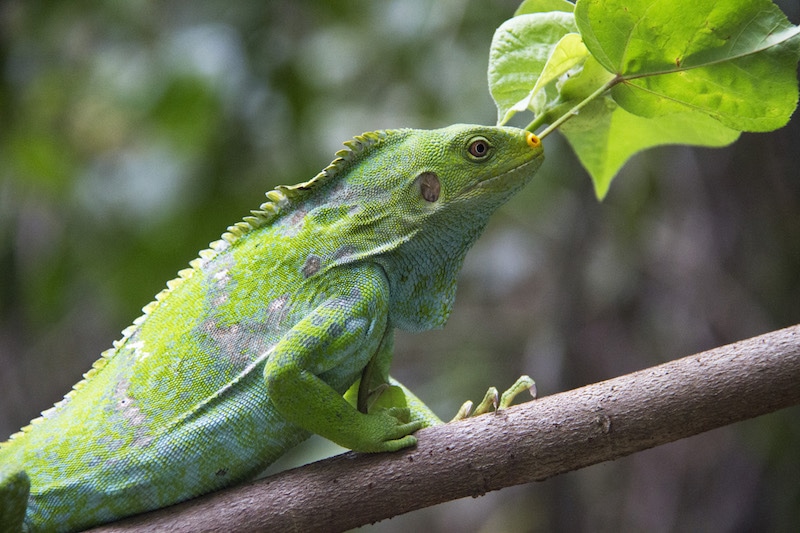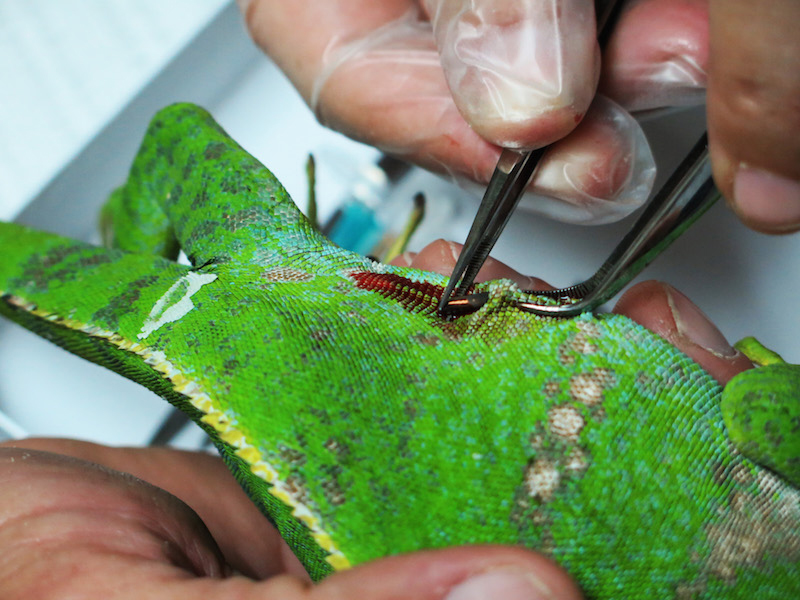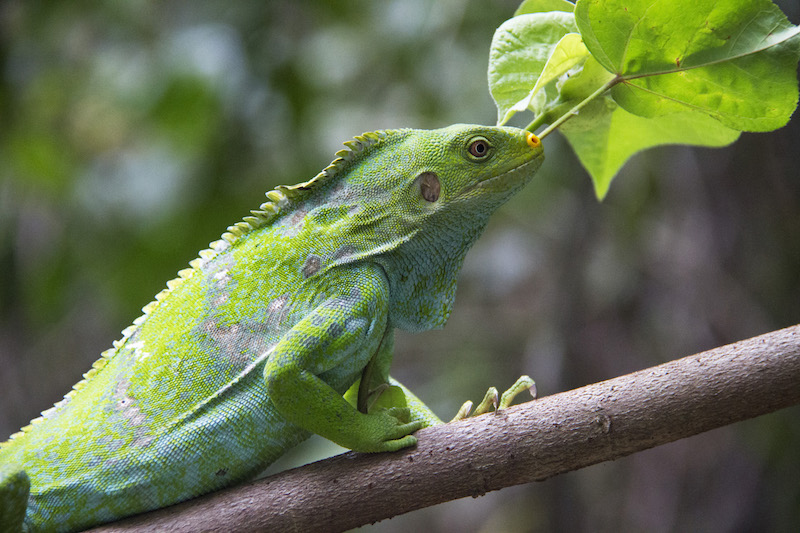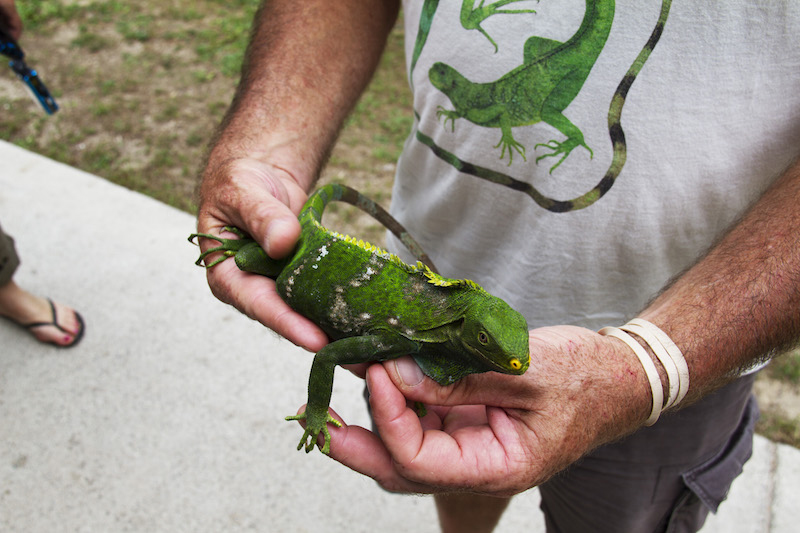In 2011, five Fiji Crested Iguana thought to be extinct from the island was discovered on Malolo Island. A fortnight ago a research team from the US discovered six more Iguanas in the dry forests of Malolo. These Iguanas’s were discovered by Kim Lovich – San Diego Zoo’s curator of herpetology and ichthyology and Robert Fisher – research biologist from the US Department of the Interior US Geological Survey . Over the years Kim Lovich and Robert Fisher have been visiting Likuliku, carefully monitoring the progress of the Iguanas in captive breeding and also surveying the dry forests. The six iguanas discovered on the 19th of June were spotted high on the tree tops. Of the six iguanas sighted, only two were successfully captured.
The discoveries can be attributed to the dry –forest rehabilitation program that Ahura resorts has engaged in for a couple of years now. “After 4 years of replanting and reintroducing dry forest on the lease and by systematically removing the presence of feral cats and rats our Iguana program has shown positive results. The Malolo Iguanas are back !” said Steve Anstey, Ahura General Manager. The Fiji Crested Iguanas inhabits these very dry forests, where the protection and conservation of their habitat is critical to saving one of Fiji’s endangered reptiles.
The two wild Iguanas that were captured were christened Ratu Namotu and Adi Navini, subsequently tagged with microchips by the research team. An exciting and important mile stone for the Iguana program on Malolo. Likuliku Lagoon was also fortunate to have Mr Olaf Kaehlert and his wife Manuela staying at the resort. Mr Kaehlert is Fiji Airways Regional General Manager North America and Fiji Airways being a Gold sponsor of MES, the couple were given the honours of releasing Adi Navini, back into her natural habitat on Likuliku Lagoon Resort.
Also five more iguanas that are in the cage in Likuliku captive breeding program were also tagged with microchips. Tagging the iguanas with microchips will aid future research in their capture, identifying them and consequently obtaining more data and information on their behaviours and most importantly their conservation.





